A toolkit of ways to calm and quell anxiety when you live in chronic pain
When you have chronic pain it’s natural to feel anxious, especially when that pain is severe, unpredictable, and as a consequence, your life so filled with uncertainty and fears. But if anxiety becomes equally chronic, whether an ongoing feeling of unease or profound panic, it can truly hamper your efforts to manage the unmanageable.
Anxiety worsens pain, your ability to cope with that pain, and can also magnify feelings of loneliness, and depression, that so frequently come with chronic illness. Although everyone experiences anxiety or sometimes feels fearful, if you feel anxious, panicky or filled with fear much of the time, talk to your doctor, and try the tools herein.
Treating the anxiety can help you manage chronic pain, and reduce other difficult symptoms. These techniques are free, effective, natural (save the last), and can ease uncomfortable feelings before anxiety takes hold, sending your pain in a greater spin, but if you’re already in its grip, also help you return your body, and mind to a far calmer equilibrium.
Why Chronic Pain Creates Anxiety

Although anxiety is defined as being a state of uneasiness and distress often about future uncertainties, when you already live with such uncertainty because of the unpredictability of chronic illness and pain, everything can be magnified, especially our thoughts, and fearful feelings, which can then self-perpetuate, increasing pain and further fears.
“Too much anxiety, or anxiety left unchecked, can lead to intense fear that can quickly spin out of control. Anxious thoughts can ‘feed’ even greater anxious thoughts, or they may stop you so you are unable to function,” says pain psychologist Jonas I. Bromberg. “If you have chronic pain, your body and mind may feel under attack. As a result, you are likely to feel worried or apprehensive about many things.”
From our most basic survival to fears of an uncertain future, and the choices that seem so far out of our hands, anxiety can come from a loss of control or independence, or fear of further losses, and increased pain, and disability, and how we might manage and cope, to even a fear of the next few moments, such is the unpredictability of chronic pain.
Oversensitive Systems—Living in a Painful World
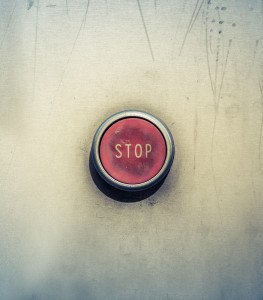
The human body is designed to be aware of any potential threat, and react to stimuli by preparing the body for survival. However, with complex pain conditions, and overactive nervous systems that are already far too sensitive, we’re naturally far more predisposed to anxiety and panicky feelings — more so when immobilised by chronic pain.
As we’re ever on the lookout for threat — for things that might make the pain worse so we can avoid or ameliorate them — we may become used to this underlying feeling of ongoing anxiety so that it too, like the pain, becomes our new normal. But much like chronic pain, anxiety serves no useful purpose, only worsening it.
Even with such uncertainty, overcoming anxious or panicky feelings is not beyond reach. Many healing tools can increase your ability to cope, manage, and lessen anxiety, even chronic anxiety. Just as our symptoms reappear, so too do we need a toolkit of ways to calm and quell these symptoms. I hope you find a little stillness, comfort, and calm in these techniques.
How to Cope When Pain Creates Anxiety
- Part I—Ways to Calm Your Body, & An Emergency Technique to Calm Anxiety
- Part II—Powerful Ways to Calm Your Mind & Shift Thinking When Anxiety Takes Over [& Other Ways to Reduce Anxiety]
Part I—Ways to Calm Your Body
Try This Acupressure Sequence to Calm Anxiety
When you are feeling highly anxious, and the pain is climbing too, you may find it hard to calm yourself down. Acupressure is an invaluable tool because it’s always available, and you can use the points the moment anxiety increases, no matter if isolated or unable to help yourself with other techniques.
Then, once you feel a little calmer, you can make use of the other techniques listed below. It’s also useful when, for example, you have to make that doctor’s appointment, even though the pain is too severe, and you know the payback will be great. Its effective, swift results help ease anxiety, overwhelm, stress, and a host of other imbalances, facilitating a shift to calmer, more self-assured places.
Try this powerful fusion of acupressure points to calm you when feeling anxious, fearful, and overwhelmed.
The poetically named, Sea of Tranquillity or CV 17 (Conception Vessel 17) is a wonderful point to use as aside from calming your anxiety, and offering you a little stillness in the storm, it also awakens courage. Yin Tang (GV 24.5), Shu Gou, and Shen Meng, which means spirit gate or door (Heart 7), are all inherently calming acupressure points to body, mind, and spirit.
The Sea of Tranquillity point is also healing for everyone who is trying to speak themselves more compassionately and lovingly. Pressing here every day can help facilitate a transition from disregard or destructive tendencies to one that is more loving, self-supportive, and kind.
-
Using your left hand, press the Third Eye Point or GV 24.5 (see image), and breath gently.
-
Using your other hand, press the dead centre of your breastbone. You’ll feel a little hollow or dip, this is the acupressure point known as the ‘Sea of Tranquillity’ (CV 17).
-
Now move your left hand to the Shui Gou point, between your nose and mouth in the little dip, and press gently.
-
Finally, using your thumb, locate Heart 7 on the other wrist. It’s found just under the hand, on the bands that run across the wrist where the hand and wrist join. Follow to the end, just beneath your pinkie or little finger and feel for the small hollow (note that the image only shows where it is from the top).
-
You will feel your hand go a little numb and radiate, sometimes pulse quite strongly with this point. Press for up to 2 minutes and swap hands and repeat for 2 minutes on that side.
Acupressure Point for Chronic Anxiety
-
Use your thumbs to press the kidney 7 acupuncture points every day.
-
To find this point, trace from directly behind your ankle bone and up the inside of your leg, approximately 1 inch from the edge of your shinbone and 1 1/2 from your ankle bone, where in this subtle indentation is the point Kidney 7.
-
Press firm enough to produce an ache that radiates through your ankle for a minute on each side and then repeat on the other leg.
Hold Something in Your Hands
Another technique is to hold something in your hands, and focus on it, being aware of its texture, and letting your focus calm and still as you feel the object, remembering to breathe as calmly as possible. “When anxiety hits, do something tangible,” says John Tsilimparis, adjunct professor of psychiatry at Pepperdine University, and author of Retrain Your Anxious Brain: Practical and Effective Tools to Conquer Anxiety.
“Take your house keys out, run your fingers along the keys. That sensation will give you grounding.” As simplistic as it sounds this creates a shift, and helps you calm both mind, and body because of the way the brain works. “Your brain can’t be in two places at once,” says Tsilimparis.
“Your mind will shift from racing, catastrophic thoughts [that accompany anxiety] to [the object] in your hand.” Try using anything from your house keys to an object that soothes you (prayer beads for instance), a crystal or a pebble from the beach. Anything that returns you to the moment can help you reduce feelings of anxiety, fear and overwhelm.
Hug a Pillow
When anxiety takes over, it can be hard to soothe yourself or ease it on your own, especially when the pain gates have opened, making both anxiety, and pain, all the more severe. The simple act of holding hands or hugging someone who cares can have significant effects on anxiety, with many studies finding that both can lower the stress response, reducing anxiety.
However, just as the ‘pain experience’ is so often an isolated one, sometimes there’s no one about to help calm you. If nobody’s near, give yourself a hug. Another technique, as silly as it may sound (but forget silly, this is for you, to help you cope, and feel better), is to hug a pillow.
The restorative yoga exercises in this post includes one wherein you ‘hug’ a yoga bolster but equally, the simple act of hugging a pillow also releases a calming response in the body, and can help replace feelings of anxiety with that of nurturing calm.
Listen to the Sea
“Although anxiety seems to start with something “out-there”, as we can see, anxiety is very much “in-here” …in your brain. So this is a good place to start if you want to learn how to tame anxiety. Just as your brain can be trained to produce anxiety through too much stress, it can also be trained to not feel anxiety,” says pain psychologist Mark Grant.
Anxiety is mediated by the brain’s fear centre—the amygdala. “The amygdala is where sensory inputs from the environment are initially processed. It also has connections to long-term memory which helps with threat detection. Your brain is a ‘bottom-up’ system which means that feelings tend to drive thoughts rather than the other way around,” says Mark.

“The most effective way to neutralize anxiety is to stimulate the lower, sensing part. This is why many people find sounds such as waves on a beach or rain on a roof soothing – they are appealing directly to this lower region of the brain.” Try listening to the ocean, to deep forest or rainforest sounds, night sounds, waterfalls or rainfall, available as apps, MP3s or on YouTube, all can help calm, and soothe you.
“To really change anxiety you need a stimuli that does three things: It must be soothing It must be interesting enough to your brain to prefer it to the anxiety provoking stimuli; it must hold your attention long enough for the relaxation it causes to actually be integrated into the emotional memory response,” adds Mark.
“Smile, breathe, and go slowly.” ~Thich Nhat Hanh
Try ‘Belly Breathing’ Every Day
Diaphragmatic breathing, and other breathing techniques, can be the most healing tool of all for anxiety. “[Slow breathing] is like an anchor in the midst of an emotional storm: the anchor won’t make the storm goes away, but it will hold you steady until it passes,” says Russ Harris.
Learn the calming technique of diaphragmatic breathing, often called ‘belly breathing, to quell anxiety, and also have a soothing effect on your pain. Diaphragmatic breathing calms the body, which in turn calms the mind.
When you start to feel anxiety taking over, take deep, abdominal breaths (see the video below). Doing so will instigate the body’s relaxation response but you do not need to only practice when anxious. Even just a few breathes of belly breathing every day can have a measured effect on anxiety, and your pain.
“Throughout the day, practice slow, deep breathing. When you breathe in, imagine you are collecting the sensations of anxiety in your body. When you exhale, let them go. The more you do this, the better you will become at letting the tension flow out of your body,” says Dr Linda Rheuhman.
This short video by Dr. Kevin Chen explains how to practice belly-breathing:
Part II—An Emergency Technique to Calm Anxiety
When Anxiety Spins into Panic
Life with chronic illness is filled with sources of anxiety, the medical process too, from treatments to medication, to a sudden reduction in that medication you so rely on, something that tragically happens to many patients. The support you may receive from loved-ones, or indeed from the government, is also an ongoing source of great angst for so many disabled people who are unable to support themselves.
Perhaps you are anxious about re-injuring yourself, and the pain becoming more severe or extensive, as with the spreading of CRPS for example (CRPS Awareness month is coming up in November). You may also be fearful of the pain itself, also an entirely understandable, human reaction but one that creates an ongoing underlying anxiety, leading to further tension and pain.
If you know an activity, event or circumstance will increase what is already severe pain — through stress, physical movement or both — it’s normal to feel anxiety, especially when you’re headed for ‘payback’ and flares. Even healthy people become anxious when they know they’re about to feel pain but sometimes even the idea of movement can increase your pain through anxiety, and fear of that pain, further immobilising you. If anxiety is spinning into panic, try this tool to calm you.
An Emergency Technique to Calm Anxiety
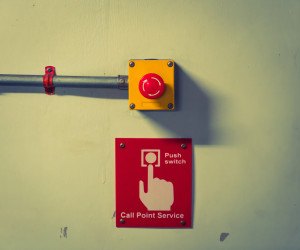
Everyone with chronic pain knows when you reach that point of panic, and the pain gates have been opened or stress levels are high, it feels near-impossible to quell the accompanying anxiety, and calm yourself down. Although what helps each of us varies, if your heart is pumping too rapidly, and your breathing also far too short, try this:
-
Recognise what is happening.
-
Try not to panic, instead focus on your breath.
-
Take deep breaths, which are longer on the exhale to activate the parasympathetic wing of your nervous system, helping your body to calm.
-
Let all that exists beyond this moment disappear as you breathe in, and breathe out.
-
Now close your eyes and visualise a vast blue sky. The sun is shining. There is peace.
-
Keep breathing gently.
-
As you do so, on the inhale say to yourself ‘I breathe in calm’.
-
On the exhale say to yourself, ‘I exhale tension’.
-
See any thoughts that might try to hamper your peaceful experience as passing clouds.
-
Do not try to hold them, slow or stop them, simply let them pass leaving your blue sky clear, and empty, and you calm.
-
Stay in this space for a few minutes until you feel ready to return to the world.
-
You may like to fuse this with the acupressure sequence, and deep breathing tools above for optimum, soothing benefits.
Part III—Ways to Shift Your Mind
“Worrying is carrying tomorrow’s load with today’s strength- carrying two days at once. It is moving into tomorrow ahead of time. Worrying doesn’t empty tomorrow of its sorrow, it empties today of its strength.” ― Corrie ten Boom
When Overthinking Creates Anxiety
Negative thoughts worsen anxiety but it’s not so simple as to simply think positive. Living with chronic pain is complicated, stressful, and of course painful. A natural human response to that stress is to think of our options, circumstances, our situation, what the future may hold, and solutions to that. It’s instinctual.
Yet if that thinking takes over — when it becomes its own source of anxiety, and pain — you need solutions to liberate yourself from this space, and tools to cope. “Anxiety has two components: the sensations you feel in your body and the thoughts that scare you and make you feel unsafe,” says pain psychologist Dr Linda Rheuhman.
“Pain and worry often go hand-in-hand. And the more you pay attention to your pain, the more likely you will have thoughts that are frightening, which may increase your worry, and so on.” Anxiety-provoking thoughts do nothing about your situation or circumstance, only making you feel worse, in more pain or more anxious and fearful but sometimes we need a little help breaking the pattern.
Try These Tools from CBT
“Chronic pain can lead to anxiety disorders such as panic, generalised anxiety, and PTSD. This is unsurprising as chronic pain sufferers may have many other negative events and stressors to deal with such as: losing a job, experiencing financial hardship and having increased stress upon families,” says clinical psychologist Catherine Madigan, who helps pain patients using cognitive behavioural therapy (CBT).
“Research has shown that having realistic, helpful thoughts is an important part of chronic pain management. Negative, unhelpful, unrealistic thoughts can lead to: increased pain, anxiety, anger and depression, social isolation and withdrawal, and poor sleep. CBT Psychologists aim to help chronic pain sufferers to change negative, unhelpful, unrealistic thoughts in relation to: their pain, the effects it has had on their life, and other stressors.”
-
Create a list of comforting phrases or affirmations for when anxiety is increasing: Anything that calms you, from ‘I am safe in this moment’ to ‘I am breathing in. I am breathing out.’ Simple phrases or mantras like these can be surprisingly useful.
-
Sometimes we have our own internal dialogue, or even broken record about the fears and the all-too-real concerns. CBT takes these thoughts or beliefs and analyses them for truth.
-
For instance, you may have the thought that you cannot go out as it will simply be too painful, and you won’t cope. You could test this for truth (see next tool), and then replace that thought with something more supportive and nourishing, ‘I have managed before and would enjoy seeing my friend.’
-
You may like to add a qualifier like, ‘if things get too much or the pain too severe, I can always come home early.
-
If you find some of the other tools in this post help you, write a reminder on a piece of paper, and carry it with you; ‘remember to breathe’ for example, or ‘press the acupressure point’ with an image of it should you wish. Read more about CBT here.
“You don’t have to control your thoughts. You just have to stop letting them control you.” ~ Dan Millman
Challenge Scary Thoughts
“It is important to remember that scary, negative thoughts don’t provide a solution and only make you feel worse. Problem-solving and planning are helpful. Worry is not,” says Dr Linda Rheuhman. “Although you cannot simply pretend that you have no pain or wish fears away, you can learn to be in control of your fearful feelings and thoughts.”
In challenging the thoughts that make you feel anxious or spark feelings of anxiety before they take over, you can help calm anxiety before it worsens your pain. “With practice, you can learn to recognise thoughts that are not part of a solution but, instead are causing anxiety and increasing pain,” says Dr Linda Rheuhman who suggests asking yourself these questions:
-
What is the evidence that this is true?
-
What is the evidence that this is not true?
-
Does thinking about this provide a solution or is it just making me more upset?
-
How would I talk to a friend about this issue?
-
Would I say frightening things or would I try to be realistic and reassuring?
If you don’t like CBT, Try ACT (Acceptance and Commitment Therapy)
An alternative, powerful (and often far swifter to learn, especially if you cannot see a therapist) way to get to the root of the difficult and unhelpful thoughts that lead to, and worsen anxiety is ACT (Acceptance and Commitment Therapy).
“The more time and energy we spend trying to avoid or get rid of unwanted private experiences the more we are likely to suffer psychologically in the long term. The more importance we place on avoiding anxiety, the more we develop anxiety about our anxiety—thereby exacerbating it,” says psychologist and author, Russ Harris, M.D.
“ACT rests on the assumption that human language naturally creates psychological suffering for us all. One way it does this is through setting us up for a struggle with our own thoughts and feelings. Many of the emotional control strategies that clients use to try to feel good (or to feel ‘less bad’) may work in the short term, but frequently they are costly and self-destructive in the long term.”
Russ gives the example of depressed patients withdrawing from socialising to avoid uncomfortable thoughts. “‘I’m a burden’, ‘I have nothing to say’, ‘I won’t enjoy myself ’—and unpleasant feelings such as anxiety, fatigue, fear of rejection. In the short term, cancelling a social engagement may give rise to a short-lived sense of relief, but in the long term, the increasing social isolation makes them more depressed.”
Equally, when anxiety is taking over, and your thoughts in a spin, using the easy-to-learn tools in ACT can truly bring you back from that brink. “ACT helps people to fundamentally change their relationship with painful thoughts and feelings, to develop a transcendent sense of self, to live in the present, and to take action, guided by their deepest values, to create a rich and meaningful life.” To learn more, read Russ’ highly recommended book, ‘The Happiness Trap.
Part IV—Other Ways to Reduce Anxiety
Keep Stress to a Minimum
Aware that with chronic pain, and such unpredictable illness that this is perhaps a bit of an oxymoron but striving to keep your life as stress-free as possible in spite of your circumstance is a vital part of managing both anxiety, and chronic pain. When you have more stress, anxiety increases.
It can also increase the body’s sensitivity to pain. Keeping additional stress to a minimum, taking time for you to relax, and being aware of habitual responses if unhelpful for your coping, you will hopefully find a little relief from your pain. You may like to try these tools to calm your mind and body.
Self-Compassion

Of course sometimes our symptoms are too fervent, and us with little to do but weather the storm and flare. Even in the toughest times, it’s vital to be kind to yourself and gentle on yourself. Compassion becomes all the more crucial when you are in pain. Be kind to yourself, and recognise that your challenges are not only great but that you are already coping, and have already survived so much.
Pain by its nature is designed to grasp attention. When pain is constant, it’s a feat in itself to live with a nervous system that is always producing severe pain. Compassion not only reduces anxiety but has also been shown to positively effect the maladaptive neuroplasticity created by chronic pain.
“Self-kindness, by definition, means that we stop the constant self-judgement, and disparaging internal commentary that most of us have com to see as normal. It involves actively comforting ourselves, responding just as we would to a dare friend in need,” says pioneering compassion researcher and author of Self-Compassion: The Proven Power of Being Kind to Yourself, Kristin Neff.
Express Yourself Creatively
“Find things that allow for self-expression. Sometimes your emotions may surge. At these times, you should find a way to express yourself. Consider an ongoing way to share your feelings in a comfortable place,” says Jonas I. Bromberg, Psy.D.
“Anxiety is very often a natural response to ongoing pain, and managing it keeps you in control. Writing or talking about your feelings is a beneficial step to self-expression.”
You may enjoy journaling, expressing your pain through art, whether photography, painting, drawing, writing poetry or prose, or any other form creative expression—all can help you release difficult feelings, in turn lessen anxiety, helping you to cope while bringing you a little joy the process.
Seeking Out & Savouring
When we are experiencing a lot of stress, pain, mysterious, and unpredictable symptoms, it is easy to focus on the negative, which in many ways is a survival skill – when feeling threatened or anxious, it’s human to keep aware for further threats — but it can mean you miss moments of presence, and positives too.
Though you may not be able to make stress or pain disappear, allow your mind to pause, and notice if there may be something good in the moment, no matter how humble or tiny, and let your mind rest on that place, while breathing gently.
It could be as simple as an image or flower. In gently returning yourself to the moment, noticing, and savouring something positive can distract you from, and calm anxious feelings. Savouring the good in the moment has also been found to create healthy neuroplasticity, negating some effects of the maladaptive brain changes caused when pain becomes chronic.
Have a Calming Cuppa [Especially if Reducing Pain Medication]
Many studies have found chamomile to decrease anxiety symptoms. Long-known as a calming tea, chamomile contains two phytochemicals, apigenin and luteolin, both of which promote relaxation.
Other calming teas include passionflower, which is especially useful before bed, helping some people to fall asleep more easily. Interestingly, one study also showed that passionflower helped ease other symptoms than anxiety, including irritability, agitation, and depression in participants in withdrawal from an opiates.
So, if you are reducing opiate pain medication, it may be worth considering drinking passionflower or taking herbal supplements; though obviously, always check with your doctor before taking any supplement for contraindications, no matter how far-fetched.
Another anxiety-soothing option is green tea, for its l-theanine content, which is the compound in green tea that makes you calm and relaxed without feeling drowsy (remember green tea contains caffeine so avoid in the evening or at night).
Practice Daily Relaxation
“Relaxation is one of the best techniques to reduce anxiety. It is often overlooked by people with severe pain – however, relaxation can bring down the pain intensity to a more tolerable level,” says Dr Linda Rheuhman.
“With practice, you can learn to be in tune to your body so that when you start to feel anxious, you notice right away, then use your relaxation skills to calm yourself down.” Relaxation techniques are crucial when you live in pain, not only to manage and cope with that pain but also calm the anxiety that comes with it.
From the many forms of meditation, to body-scan relaxation, to progressive muscle relaxation to self-hypnosis or guided hypnosis, visualisation and creative imagery, experiment to find something that’s healing for you. You may enjoy this article with various studies on the effectiveness of relaxation and meditation on anxiety. Also see 3 Natural Ways to Reduce & Manage Pain and 10 Ways to Lift Your Spirits, Cope & Calm Chronic Pain.
When Pain Overlaps with Anxiety & Depression
“Treatment is challenging when pain overlaps with anxiety or depression. Focus on pain can mask both the clinician’s and patient’s awareness that a psychiatric disorder is also present,” says Celeste Robb-Nicholson, M.D., Harvard Health Editor in Chief. Just as stress can exacerbate pain, so too will anxiety and depression.
“Anxiety, depression and pain often go together. This is true for people with chronic and sometimes disabling pain syndromes. After all, chronic pain is depressing,” says Michael Craig Miller M.D, senior editor for Mental Health Publishing at Harvard Health Publications at Harvard Medical School.
“For people with depression or anxiety, physical pain can be more severe compared with what other people experience. Some people with major depression experience it as physically painful.” Even when anxiety is recognised, chronic pain patients are often given little in the way of support or helpful solutions. Find coping tips for depression here.
Anti-Anxiety Medication
Although I tend to advocate natural alternatives, according to David Linden, professor of neuroscience at the Johns Hopkins University School of Medicine and author of Touch: The Science of Hand, Heart, and Mind, some pain patients find relief from anti-anxiety medications because of the feedback loop between chronic pain and anxiety.
“It turns out that the emotional pain centers are richly interconnected with regions of our brain having to do with cognition and anxiety and anticipation. So this is why many people who suffer from chronic pain can get partial relief from anti-anxiety medication,” says David Linden.
“It’s not that the anti-anxiety medication directly affects pain-perception — what it does is it breaks this horrible positive feedback loop between anxiety and chronic pain. So if you have chronic pain, then you become anxious about, “When is it going to stop? When is it going to recur?” And that anxiety seems to trigger more chronic pain.”
Anxiety, Pain & The Brain
The relationship between anxiety and chronic pain goes deeper than a response to the pain but exists in our very circuitry. “Researchers once thought that pain, anxiety and depression were related due to psychological factors but now know more about how the brain works, and how the nervous system interacts with other parts of the body,” says Michael Craig Miller M.D.
“They have discovered that pain shares some biological mechanisms with anxiety and depression.” As researchers learnt more about the brain, and how the nervous system interacts with the body, this discovery that pain shares some biological mechanisms with anxiety and depression offers hope for finer treatment of both the physical and mental aspects of chronic pain.
Connect. Share. Vent.
Connect with others who share similar challenges, whether online or in person, and share your fears, and concerns but support others too for even the strongest need their support reciprocated. “Thinking about your concerns and sharing them with others can help you define and review your worries,” says Jonas I. Bromberg, Psy.D.
“Then you can decide if you need more help to understand your concerns and how you cope with them. This can move you forward with your life.” You may like to join our growing, and ever so lovely Princess in the Tower community on Facebook, or follow @apainprincess on Twitter.
If you enjoyed this post, feel free to share the love & your thoughts below or in the Guest Book. ♥
You can also sign-up to the Princess Post and receive a free Flare-Up Toolkit here:
[avatar user=”jomalby” size=”thumbnail” link=”www.princessinthetower.org” target=”_blank”]Gentle hugs x[/avatar]
Read more on anxiety and chronic pain here:
Anxiety Symptoms Often Accompany Chronic Pain
The Biological Link Between Anxiety And Chronic Pain
The Surprising Link Between Anxiety and Pain — Science of Us
6 Cheap, Natural, and Quick Anxiety Remedies | Everyday Health
Best Ways to Ease Anxiety Disorders
Chronic Pain Management, Psychologist Treatment For Chronic Pain
Ways to reduce anxiety when you have chronic pain | painACTION.com
The pain-anxiety-depression connection – Harvard Health
Coping with Anxiety and Stress Disorders – Harvard Health
Pain and Anxiety: Rinse it Out
Ways to reduce anxiety when you have chronic pain

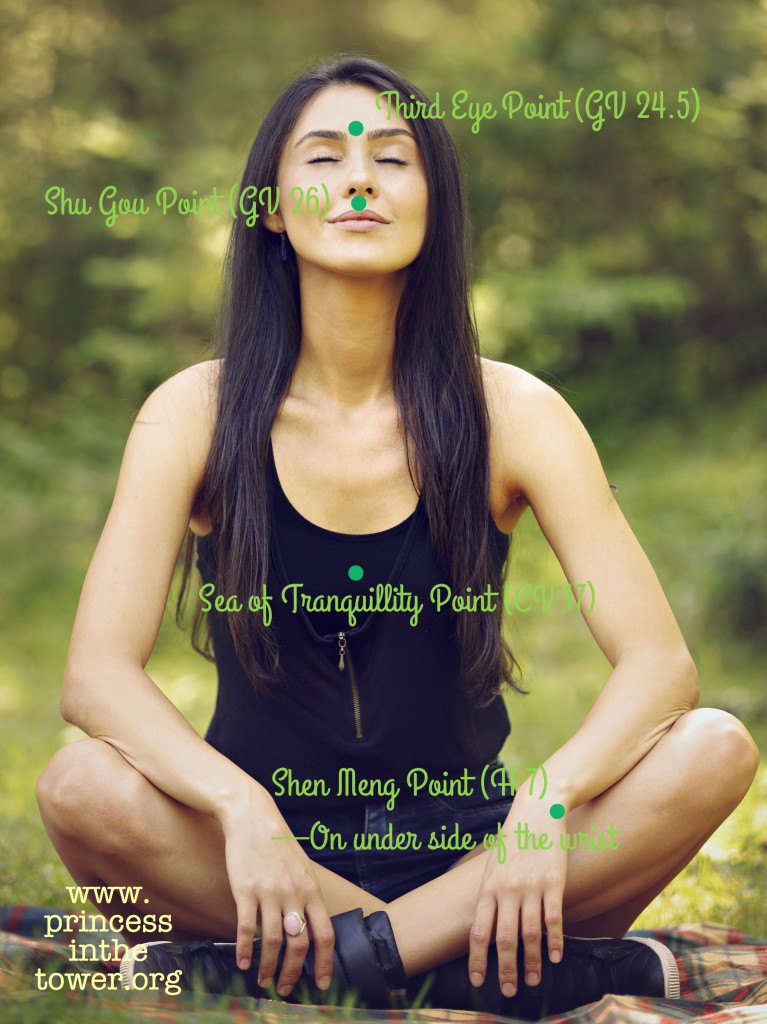



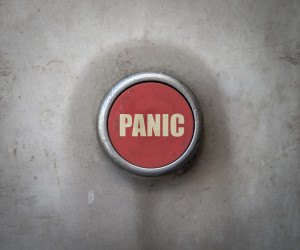




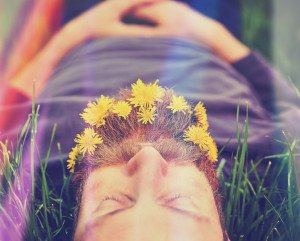




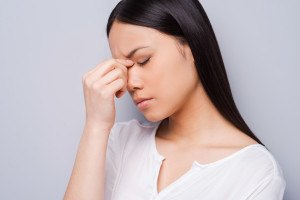



As always, great information!! Thank you 🙂 Lisa
Always welcome, Lisa. So happy you enjoyed it. 🙂 gentle hug ♥ x
Thank you for your very thorough article. That was what I liked best about it. Often articles can be trite and contain just one idea: this was very comprehensive and there was a lot of food for thought. You’re right, I can’t focus on 2 things at once! What a relief!!
I have CRPS and co morbid conditions. Really appreciate the effort you put into The Tower. Hope you’re having a good weekend yourself!
No idea how your kind comment slipped through the net, Paula, though so touched by it. CRPS flared but *thank you* ♥ x
I always face some anxiety problems, here I figure out so many ways to reduce it. Thanks for a great article.
Pleasure, Annabella, so pleased it’s helpful for you. Anxiety can be so overwhelming, I truly hope some of these tools help you cope with it. Gentle hug ♥ x
This is one of the best articles I have read in 15 years. And I really needed to read it today. Thank you so much for sharing. There are several suggestions I will be trying immediately.
Thank you so much for your lovely comment, Judi. So pleased it’s useful for you, and hope the suggestions truly help. Gentle hug ♥ x
Thank you so much for a wonderful article with many helpful suggestions. I truly appreciate this.
You’re so welcome, Ann. Delighted you enjoyed it, and hope the suggestions help. Gentle hug x
This site is a great resource for me with chronic FM pain, depression, anxiety, fog, panic, etc. Many times the pain feels as though it’s not worth living through but I keep pushing on to read and find resources to try. Perhaps, this is my new normal but…is such a struggle. Thank you for sharing all of this great info. I am not alone.
Pleasure, Marie, so pleased it’s useful for you. You’re not alone. Gentle hug ♥ x
I am thrilled with all the tips and information given here. For those who find they have stepped left of center and can no longer open up to some of these suggestions, I would love to see some remarks on tiny steps that would enable these people to at least recognize they are sunk in a quagmire of pain, anxiety, all the above and now as a result they have burned bridges and sabotaged any ability to move forward in a positive way that would salvage what is left of their life. They are frozen in place, no friends for support as they have backed away, no family (with the exception of one daughter who is about to move back) for the same reason, etc. Control has become the main factor ruling over all. Your pawns are scampering about in the attempt to please, fulfill every demand, food you must have, items purchased that are impossible to locate, medication you must have filled that minute – but wait – what about the blank blank that needs doing this minute also. If not satisfied – screaming will commence and go on for hours followed by 2-3 days of sleep with no eating, no waking, not a thing. Again it begins upon waking. Everyone is wonderful, the most fantastic people in the world – until they are not. This woman is my sister and I have backed away once and for all. I too live with chronic pain and am the polar opposite of her – I will make it through and have since age 20 when I had a stroke, recovered, worked for the Federal Govt. for 20+ years, still raising a disabled daughter, married for 51 years to a man with PTSD from Viet Nam, and so on. I just can’t add her to my to do list any longer. Oh, and I am running to be with my mom who is in a facility with Alzheimers – I know my sister caused it to become worse as they lived together for many years. Breaking the bonds of cruelty on a person who uses sabotage to prevent any help to come their way and rid themselves of any support is so sad. How many have drifted to this empty sea and finally drowned with no help? What say you? Curious in Florida…..
Thank you so much for a wonderful article. You are a real princess.
Always love reading your posts.
Mike
Thanks, Mike, so touched by your comment and kind words. Just escaping a long setback so soon returning with new articles and offerings. ❤ x
Great Post on chronic pain and depression.I was looking for such type of blog for along time.I appreciate your sharing.Keep posting such an amazing content.
Thanks, Elizabeth. So pleased it resonated with you and you like this blog. Grateful for your kind comment. ❥
Thank you great information, I have been seeing a psychologist for 12 weeks and reading this article have given me more knowledge than the psychologist has. Thank you!!!
You’re so welcome, Belinda. That’s wonderful, so happy it’s useful. Thank you for your lovely comment! ♡
Thank you so much for this article talking about the affects anxiety has
I have suffered from CRPS since the age of 11. I have definitely noticed that my condition has weakened
My immune system as when I was younger I always got sick. I also have noticed that my lymph are constantly swollen. I’ve had scans and blood tests
And thankfully nothing bad has shown. I unfortunately suffer from health anxiety and catastrophes as my CRPS started small and blew out of proportion, so I now
think this will happen with everything. I’ve always got this stress about my lymph nodes and have really researched them in relation to CRPS and have struggled
To find information about this until I came across your article. Thank you so much for publicly displaying this information I really appreciate. I would love it if you
Send me a more simple explanation into how CRPS affects the lymph nodes as I’m desperately seeking for reassurance.
Kinds regards
Eloise
Thank you so much for this informative article. I suffer from fibro, ehlers-danlos, arthritis, and chronic pain and as a result severe anxiety. I have been taking benzos for the anxiety and opioids for pain-not a good combo. I have been looking for alternatives to taking anti-anxiety meds. I’ve tried some of your suggestions and have had some relief (yay!). Thnx for sharing. 😎
I was diagnosed with Fibromyalgia around 7 years ago although I’m certain I have had it much longer than that. I have suffered from sleeplessness, joint stiffness, severe pains, depression and fatigue. My neurologist prescribed duloxetin 40mg daily (Given as 20mg twice daily), although it did relieve some of the pain, I still suffered from joint stiffness and extreme fatigue. Finally, i started on Fibromyalgia herbal formula i ordered from Natural Herbal Gardens, this herbal formula did the magic! almost immediately i started usage, i started noticing a general reduction of symptoms including the very severe pains and fatigue. 9 weeks into usage, the disease has totally succumbed to this herbal treatment. The whole pains and terrible fatigue has seized and i am now able to function fully well again. (Visit www .naturalherbalgardens . com ) I’m able to get out of bed in the morning and have more energy to go about my daily activities.
Thank you, I appreciate it.
We should be aware of the important points in this article as to how you could cope up when chronic pain increases anxiety with the tools to calm and soothe. This would surely be a huge help. Thanks for sharing this great article.